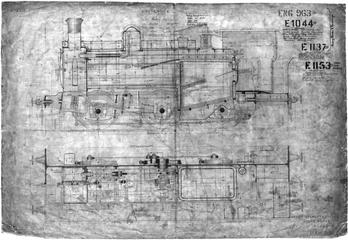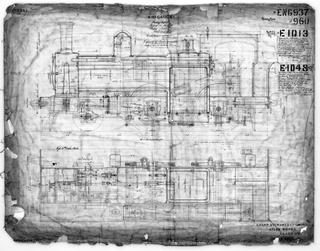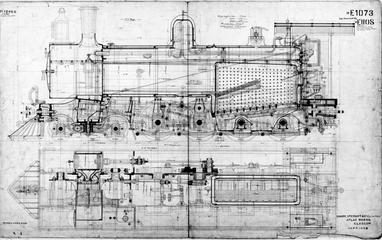
Sharp Stewart & Co Ltd
In 1811 the firm Sharp, Greenleaves & Co had premises in New York Street with a Warehouse at Oxford Street Wharf in Manchester. c.1822 the Sharp offered Richard Roberts a partnership and the firm became Sharp, Roberts & Company, Engineers, Globe Works, Faulkner Street. In 1825 Roberts invented the self-acting spinning mule, and by 1833 the company's first locomotive was built for the Liverpool and Manchester Railway.
In 1843 Richard Roberts left and the firm became Sharp Bros. In 1852 John Sharp who was the senior partner of Sharp Bros. retired and Charles Patrick Stewart took over. The name of the company was consequently changed to Sharp, Stewart & Company, becoming a limited company in 1864.
Throughout the 1850’s – 1880’s, Sharp Stewart made locomotives, but also continued to make machines, tools and carry out foundry work. The company soon needed bigger premises as orders for locomotives increased significantly and the lease on their Atlas works site in Manchester was due to expire. By 1887 the Clyde Locomotive Company was for sale and Sharp Stewart decided to move its business to Glasgow where wages and rates were lower than in Manchester and where they would also have access to sidings and docks at the site of the Clyde Locomotive Works. Walter Neilson sold the Clyde Locomotive Company to Sharp Stewart who renamed the works the Atlas Works after their old premises in Manchester.
The move to Glasgow was completed by 1888 and within a short period of time, work in Glasgow began to exceed production levels Sharp Stewart had been achieving in Manchester. Orders for locomotives came in from all over the world, predominately from Asia, South Africa & South America, as well as the domestic market and industry.
When the company became part of the North British Locomotive Company in 1903, Sharp Stewart & Co Ltd employed 2000 people and was producing on average 150 locomotives per year. By this time Sharp, Stewart had produced over 5000 locomotives. The works retained the name Atlas Works at amalgamation.




